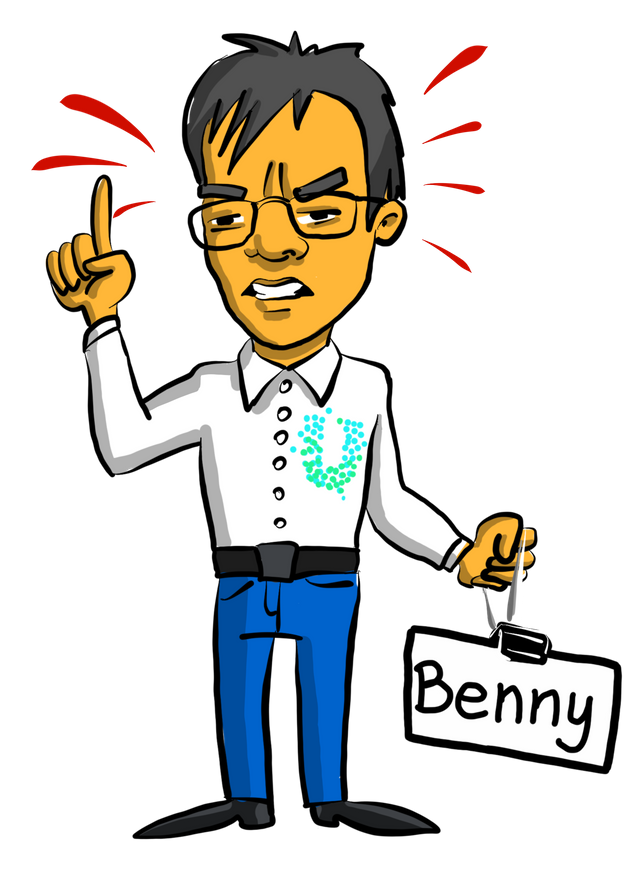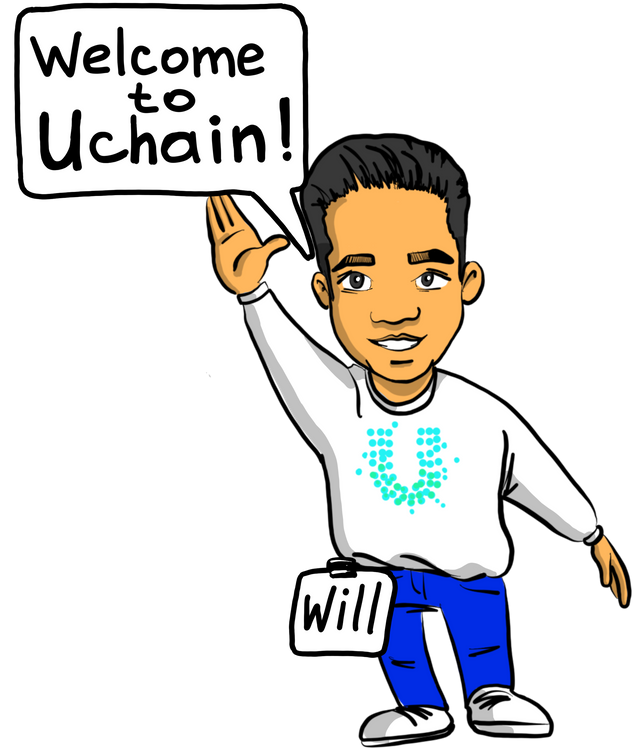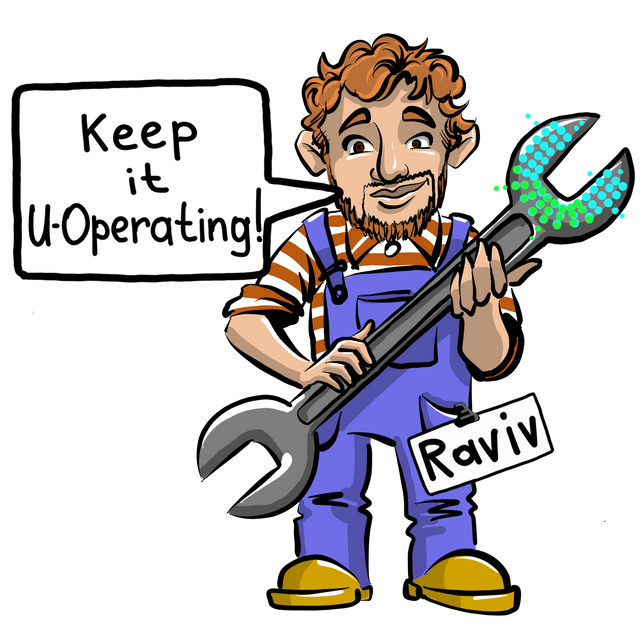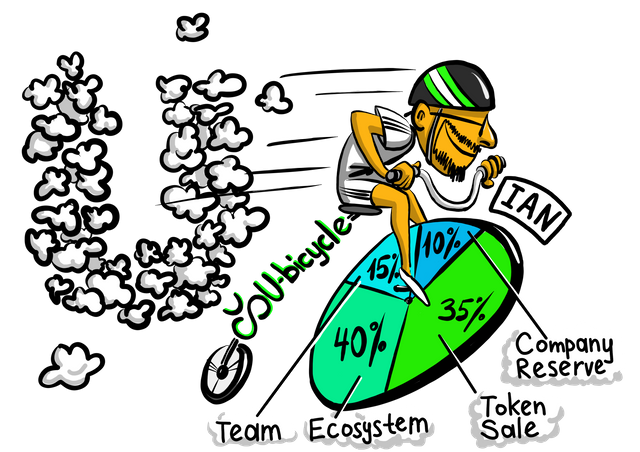UChain: A Distributed Next Generation Intellectual Network
UChain is a platform designed to facilitate the development of decentralized applications (dApps) based on a data-sharing model for creating the first public infrastructure blockchain. The developers seek to ensure the operation of a basic network able to solve ongoing problems of trust and data abuse.
The solution to these problems is being sought through the implementation of a peer-to-peer network with distributed data storage, internal cryptocurrency and a user credit passport.
Development Team
UChain is being developed since 2017, and the team mostly include employees of the U-Bicycle, which is a subsidiary of U.B Group Holding. This Internet organization owns several companies based on the model of sharing. Their spectrum of users exceeds 30 million people a month. U.B Group Holding successfully passed four rounds of modernization, specific details of which are not disclosed. It is also unclear whether UChain received funds through direct investment.
The website of the project presents the team of 8 core managers and 12 advisors. Almost all of them simultaneously participate in the development of the U-Bicycle.
UChain Project Objective
Being well aware of the potential of a shared economy, which market is expected to reach $ 520 billion in 2018, UChain developers are building its underlying blockchain infrastructure for the global sharing economy ecosystem.
In the divided economy, companies are intermediaries between users and service providers. Such organizations usually receive commissions from private providers, which leads to an increase in the cost of services. User data is often subject to the risk of leakage or theft if intermediary companies save on the security system or “drain” personal information to other organizations for money.
It is for this reason that the authors of the UChain came up with the idea of creating a blockchain infrastructure, which will store information about transactions between customers and suppliers, as well as data for their identification. Thanks to the decentralization of the blockchain, the need for intermediaries is eliminated, so the commission for transactions will be reduced by 20%.
In addition, large files will be split into smaller fragments and stored on different nodes, rather than centrally. Access to the complete data file of a specific user is almost impossible since it is scattered on several nodes. Companies will also no longer be able to sell other people's data secretly.
The network will have its own digital wallet, and client companies will be able to create dApps and issue their tokens through the implementation of the API and SDK. The network is based on the consensus RPCA algorithm, borrowed from the Ripple protocol.
This will make UChain the best global ecosystem for offline data exchange. Within this decentralized network, all users will be given certain powers. The UCN token is intended to be used as a base currency, which will contribute to the development of a new coin standard, URC-1, which is intended for the development of a shared economy.
UChain is developing under the auspices of U-Bicycle, the world’s leading Internet company specializing in joint travel. It is the parent company for many leading Eastern brands such as U-Car, U-Park, Grab-cycle, X-Bike and others. All technologies developed by the parent company and its subsidiaries will be incorporated into existing U-Bicycle structures.
UChain will be the base for the U.C. Foundation, which will become an analogue of the business model of the NEO and Bitcoin investment fund, working on standardization, promotion and security.
The RPCA Algorithm
When choosing the algorithm of the coordinated mechanism, developers considered several basic options, including POW, POS, DPOS, DBFT and RPCA. The choice in favor of the latter was made in connection with the fact that it is intended mainly to ensure high transaction speed and can be used to meet different needs and scenarios in the shared economy.
Information can be effectively transmitted to each network node in a few seconds with high Byzantine fault tolerance. In addition, the RPCA algorithm has proven its reliability and efficiency in the Ripple network.
The speed of transactions and the high level of parallelism are two important aspects for an overall assessment of the system. In this regard, developers have excluded PoW and PoS, which are extremely slow to generate blocks, which, in turn, leads to a significant decrease in transaction speed.
The main goal of RPCA is to ensure the speed of the transaction, which will correspond to the scenarios of the shared economy. The RPCA algorithm performs each transaction in two stages. The first one is the achievement of consensus on a set of transactions. The second one is to use the newly generated block and add it to the blockchain.
Platform Components
The system will combine a number of components, of which the following are basic.
UCN Tokens Incentive Programme
UChain intends to launch an incentive program which will be using the UCN token. The network will encourage outstanding participants, individuals or organizations through the PoA (Proof of Activity) algorithm. A special program will update the pool of remuneration tokens due to dynamic elasticity and recalculate their size within fixed time intervals to distribute tokens by users’ digital wallets.
URC-1 Standard
UChain provides the possibility to issue and manage one’s own tokens. Service providers (individuals or legal entities) will be able to distribute digital assets for free according to the URC-1 standard. Users will have the opportunity to invest in these digital assets to generate additional revenue.
The URC-1 standard is the interface standard for the release of tokens within the UChain platform. It provides basic functions for transferring coins and allows people to approve the use of tokens by third parties.
Digital Asset Registration Platform
The Digital Asset Registration Platform offers the asset owners an access to participation in the UChain. The user needs to register its assets before these assets will be put on the list of offered exchange services. This is also one of the important basic services for which companies should create dApps.
When creating an application within a shared economy, the company integrates the asset registration process through the built-in APIs and SDKs provided by the platform.
User Passport System
UChain will create a User Intelligent Passport (UIP) for each user. This digital document will be used as a password for accessing the platform. It will be developed on the basis of the unique identification technology through decentralized user authentication Civic Reusable Know Your Customer (KYC). UChain will connect the pieces of data left by users in different applications to create their credit center and its decentralization.
In this process, encryption technology will be used to separate data and ensure confidentiality and security. No one can access the user's private information and its original credit data.
UChain will implement artificial intelligence technology to obtain user data from various platforms, and then perform analysis based on the information received. User data will determine the creditworthiness of the user. This information will be reflected in applications created on UChain, so that both sides of the transaction can access it. This will be a solution of the problem of trust.
Pros & Cons
Among the pros of the project, it can be noted that UChain stands out among some other similar projects, such as Origin Protocol, for example. First of all, this is due to the fact that it is aimed at developing its own blockchain and digital wallet. It also allows companies to create their own applications.
Origin Protocol, in turn, provides a set of protocols that allow buyers and sellers to create blockchain-based decentralized markets.
UChain is able to help users easily develop dApps and select the services they want to purchase by paying them with UNC tokens.
Like any other blockchain project, it also has some cons. It should be noted that its authors are trying to develop their own blockchain. However, based on current achievements in the implementation of the project, the development of its own platform and digital wallet, in accordance with the Roadmap, will not be a fast process.
Origin Protocol develops a protocol for the exchange of economic markets, where buyers and sellers can find each other for sale or purchase of services. UChain will provide a platform specifically for companies seeking to develop their own dApps.
Despite the fact that block technology can be implemented faster and has a number of advantages, companies may lose their current centralization in the management of user data and lose some of their revenues. In this regard, the developers of UChain need to consider how exactly they will be able to attract service providers to their platform.
The Roadmap
2018
II Quarter:
• Pre-sale and Crowdsale;
• Token distribution and UCN will be made transferable.
III Quarter:
• Development of a digital wallet and a blockchain explorer;
• Launch of the test version of the network.
IV Quarter
• Launch of the operational version of the network;
• Enabling the Enterprise Open Platform.
II-IV Quarters:
• Development of partnerships;
• Transformation of the platform into the «Sharing economy 2.0». system.
2019
I Quarter:
• Launch of the system of user passports;
• Integration of dApps U-Bicycle into the UChain.
Way forward:
• Accessibility of the system and P2P transactions;
• Updates and development to ensure greater scalability and availability for any sharing company that would like to use the “Sharing economy 2.0” ecosystem.
It is worth pointing out that some of the developments described in the technical documentation are not reflected in the Roadmap. For example, it is stated that the organization plans to develop a decentralized exchange, but the target date of its launch is not specified in the Roadmap.
Conditions and Schedule of the UChain ICO
Official web-site: https://uchain.world/
Token sale is carried out in three stages: a private presale, a public presale and a crowdsale. The first two stages had ended in June 2018, and the beginning of the crowdsale is scheduled for July 10. The preliminary private sale provided for the collection of 22,000 ETH with a reward of 50%, a total presale of 8,000 ETH and 15% respectively.
Conditions of the ICO Main Stage:
• Hard cap — 12 000 ETH (42 000 ETH in total);
• Token standard — ERC-20;
• Exchange rate — 1 ETH = 5000 UCN;
• Accepted currencies — ETH.
Token distribution:
• Token sale — 35% (cancelled and changed with bounty program);
• Development of the ecosystem — 40%;
• Development team — 15%;
• Reserves held — 10%.
Allocation of funds:
• Research and Development — 35%;
• Marketing — 30%;
• Global operations and Expansion — 30%;
• Advisors — 5%.
Conclusion
At first sight, the project seems really good and has great potential. Its authors are aimed at solving existing problems in the distributed economy, such as excessive transaction costs, lack of trust and data abuse. To address such problems, they use innovative solutions based on the blockchain technology and the creation of a decentralized ecosystem of a distributed economy on a global scale.
It all started with the parent U-Bike company, which has a good reputation of a time-tested organization. This can serve as a reference point for the UChain development.
The team of developers are well acquainted with the branch of the distributed economy and have expertise in this field. However, they lack sufficient experience in the use of the blockchain technology, so it will make sense for the company to attract consultants who have the relevant and successful experience.
In general, this project has a very promising future and its development depends entirely on the actions of the development team.




nice